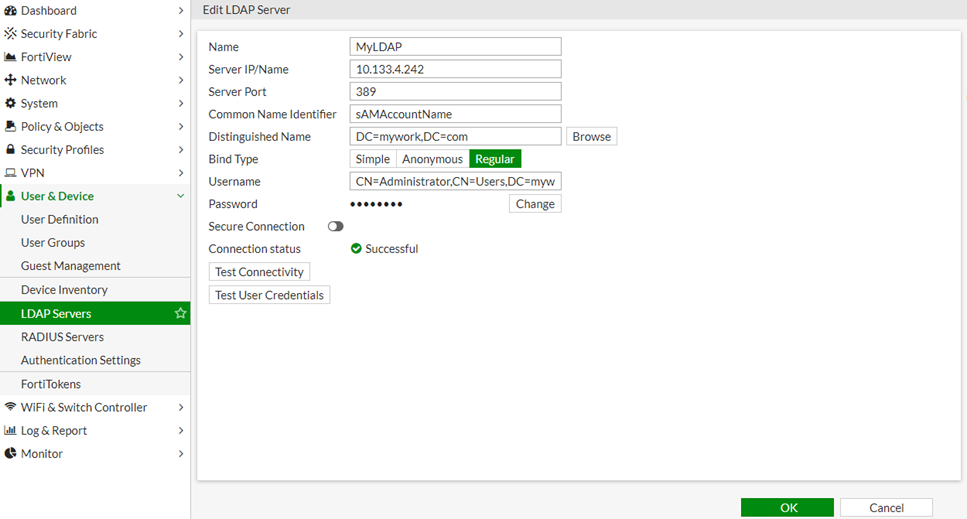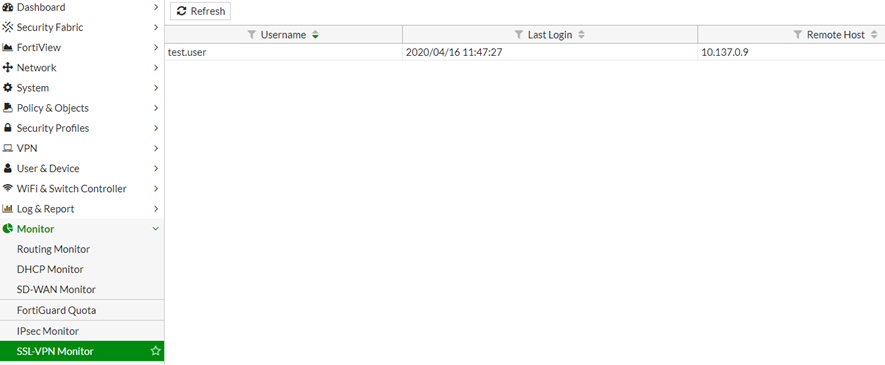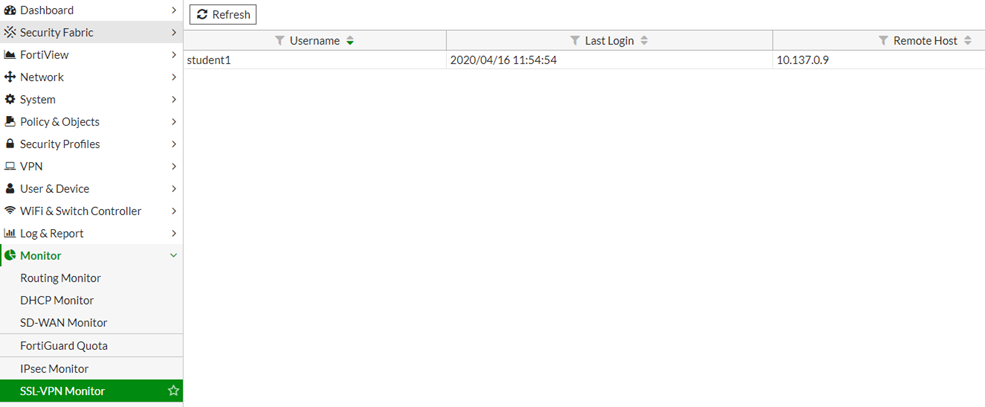- Support Forum
- Knowledge Base
- Customer Service
- Internal Article Nominations
- FortiGate
- FortiClient
- FortiADC
- FortiAIOps
- FortiAnalyzer
- FortiAP
- FortiAuthenticator
- FortiBridge
- FortiCache
- FortiCare Services
- FortiCarrier
- FortiCASB
- FortiConverter
- FortiCNP
- FortiDAST
- FortiData
- FortiDDoS
- FortiDB
- FortiDNS
- FortiDLP
- FortiDeceptor
- FortiDevice
- FortiDevSec
- FortiDirector
- FortiEdgeCloud
- FortiEDR
- FortiEndpoint
- FortiExtender
- FortiGate Cloud
- FortiGuard
- FortiGuest
- FortiHypervisor
- FortiInsight
- FortiIsolator
- FortiMail
- FortiManager
- FortiMonitor
- FortiNAC
- FortiNAC-F
- FortiNDR (on-premise)
- FortiNDRCloud
- FortiPAM
- FortiPhish
- FortiPortal
- FortiPresence
- FortiProxy
- FortiRecon
- FortiRecorder
- FortiSRA
- FortiSandbox
- FortiSASE
- FortiSASE Sovereign
- FortiScan
- FortiSIEM
- FortiSOAR
- FortiSwitch
- FortiTester
- FortiToken
- FortiVoice
- FortiWAN
- FortiWeb
- FortiAppSec Cloud
- Lacework
- Wireless Controller
- RMA Information and Announcements
- FortiCloud Products
- ZTNA
- 4D Documents
- Customer Service
- Community Groups
- Blogs
- Fortinet Community
- Knowledge Base
- FortiGate
- Technical Tip: Authenticate remote and local users...
- Subscribe to RSS Feed
- Mark as New
- Mark as Read
- Bookmark
- Subscribe
- Printer Friendly Page
- Report Inappropriate Content
Created on 04-16-2020 12:00 PM Edited on 06-09-2022 03:14 PM By Anonymous
Description
This article describes how to authenticate remote LDAP users and local users via SSLVPN under the same User Group on FortiGate.
Solution
Configure step by step, test and troubleshoot SSLVPN web mode authentication on FortiGate using local user and remote LDAP user.
1) Create local users 'student' and 'student1' CLI / GUI.
# config user local
edit "student"
set type password
set passwd PasswordStudent
next
edit "student1"
set type password
set passwd PasswordStudent1
next
end

# config user ldap
edit "MyLDAP"
set server "10.133.4.242"
set cnid "sAMAccountName"
set dn "DC=mywork,DC=local"
set type regular
set username "CN=Administrator,CN=Users,DC=mywork,DC=local"
set password secretLDAPpassword
next
end

# config user group
edit "SSLVPN"
set member "MyLDAP" "student" "student1"
# config match
edit 1
set server-name "MyLDAP"
set group-name "CN=test,OU=test,DC=mywork,DC=local"
next
end
next
end
4)Configure SSLVPN.
# config vpn ssl settings5)Configure firewall policy and add 'SSLVPN' group to the Source field.
# config authentication-rule
edit 1
set groups "SSLVPN"
set portal "web-access"
next
end
end
# config firewall policyTROUBLESHOOTING.
edit 0
set name "IncomingSSLVPN"
set srcintf "ssl.root"
set dstintf "port4"
set srcaddr "all"
set dstaddr "all"
set action accept
set schedule "always"
set service "ALL"
set logtraffic all
set groups "SSLVPN"
next
end
1) Test user authentication and debug logs.
- Test existing LDAP user 'test.user' via CLI.
# diagnose test authserver ldap MyLDAP test.user Password12- Login remote via SSL-VPN Portal , Monitor and debug SSL-VPN.
authenticate 'test.user' against 'MyLDAP' succeeded!
Group membership(s) - CN=Domain Users,CN=Users,DC=mywork,DC=local# diagnose debug application sslvpn -12) Login to the SSL-VPN portal with the local user 'student', monitor and debug SSL-VPN.
Debug messages will be on for 30 minutes.
# diagnose debug enable
…
[359:root:4b]sslvpn_authenticate_user:191 authenticate user: [test.user]
[359:root:4b]sslvpn_authenticate_user:198 create fam state
[359:root:4b]fam_auth_send_req:583 with server blacklist:
[359:root:4b]fam_auth_send_req_internal:461 fnbam_auth return: 4
[359:root:4b]Auth successful for group SSLVPN
[359:root:4b]fam_do_cb:654 fnbamd return auth success.
[359:root:4b]SSL VPN login matched rule (1).
…# diagnose debug application sslvpn -13) Login to the SSL-VPN portal with the local user 'student1', monitor and debug SSL-VPN.
Debug messages will be on for 30 minutes.
# diagnose debug console timestamp enable
# diagnose debug enable
…
2020-04-16 10:32:39 [359:root:33]sslvpn_authenticate_user:191 authenticate user: [student]
2020-04-16 10:32:39 [359:root:33]sslvpn_authenticate_user:198 create fam state
2020-04-16 10:32:39 [359:root:33]fam_auth_send_req:583 with server blacklist:
2020-04-16 10:32:39 local auth is done with user 'student', ret=0
2020-04-16 10:32:39 [359:root:33]fam_auth_send_req_internal:461 fnbam_auth return: 0
2020-04-16 10:32:39 [359:root:33]fam_auth_send_req_internal:470 authentication OK
2020-04-16 10:32:39 [359:root:33]fam_do_cb:654 fnbamd return auth success.
2020-04-16 10:32:39 [359:root:33]SSL VPN login matched rule (1). <----- The rule refers to the section 'config authentication-rule' in the SSLVPN settings or the GUI order or the portal matching. First rule matching will stop processing.
…# diagnose debug application sslvpn -1Note:
Debug messages will be on for 30 minutes.
# diagnose debug enable
[359:root:3c]sslvpn_authenticate_user:191 authenticate user: [student1]
[359:root:3c]sslvpn_authenticate_user:198 create fam state
[359:root:3c]fam_auth_send_req:583 with server blacklist:
[359:root:3c]fam_auth_send_req_internal:461 fnbam_auth return: 0
[359:root:3c]fam_auth_send_req_internal:470 authentication OK
[359:root:3c]fam_do_cb:654 fnbamd return auth success.
[359:root:3c]SSL VPN login matched rule (1).
In case the LDAP contains a user called 'student' (same as local user) , then LDAP user will take precedence and local user with an assigned token can be overridden.
Related Articles
Technical Note - Configuring Remote LDAP users with Two-Factor Authentication
The Fortinet Security Fabric brings together the concepts of convergence and consolidation to provide comprehensive cybersecurity protection for all users, devices, and applications and across all network edges.
Copyright 2025 Fortinet, Inc. All Rights Reserved.



